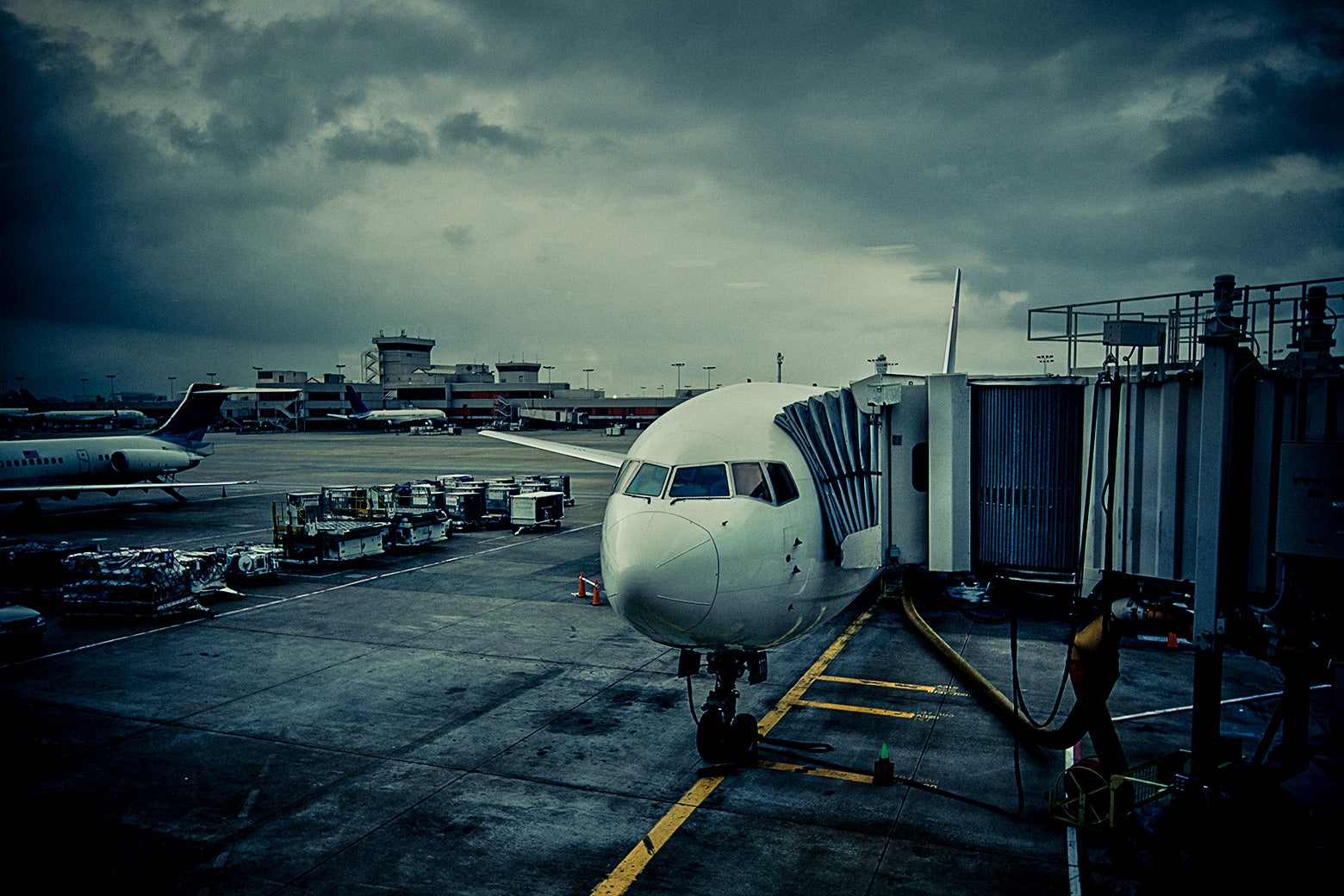Air travel in the United States is overwhelmingly safe. Compared with recent decades, air travel is shockingly safe. Think back to the 1990s, a decade studded with disasters:
1994: A USAir flight crashes while trying to land in Charlotte, killing 37. (Culprit: wind shear.) 1994: A USAir flight crashes while trying to land in Pittsburgh, killing 132. (Culprit: mechanical failure.)
1996: A ValuJet flight crashes into the Everglades, killing 110. (Culprit: cargo fire.)
1996: A TWA flight explodes after takeoff from JFK, killing 230. (Culprit: fuel-tank explosion.) 1999: An EgyptAir flight crashes into the sea south of Nantucket, killing 217. (Culprit: the first officer, it seems.)
Now, no one has died in a U.S. airline crash since 2009. But how long can the respite last? Monday’s New York Times featured a blockbuster story about the frighteningly commonplace near misses plaguing the airline industry.* After telling the story of three almost disasters in July alone—including one in which a Frontier plane parked so close to an active runway that it was buzzed by two accelerating jets in a manner described by the Federal Aviation Administration as “skin to skin”—the Times pointed out that near misses happen much more frequently than most people understand. “In the most recent 12-month period for which data was available,” the Times noted of a public database of independently reported incidents, “there were about 300 accounts of near collisions involving commercial airlines.”
The Times story points out that only 43 of the more than 500 airports in the United States have surface-detection systems to alert the air traffic control tower to dangerous runway conditions. And those towers are underpopulated with hideously overworked controllers: Ninety-nine percent of the country’s air traffic control facilities are staffed under recommended levels, and controllers are regularly asked to work six days a week. (The Times found a number of controllers who had worked 400 hours of overtime already this year.)
What does all this mean? After all, the nation’s commercial airlines have not suffered a fatal crash in more than 14 years, an unprecedented period of safety. But while no one wants to go on the record to the New York Times to say it, the story makes it very clear: The next big crash is coming. “It is only a matter of time before something catastrophic happens,” one unnamed controller wrote in a confidential FAA safety report last year.
Everyone I’ve spoken to in commercial aviation recently about these “near misses” agreed. “There’s a pulse in the industry that says we’re close to something happening,” said a captain at a major airline. “We’re talking to controllers who are overwhelmed,” a first officer at a different airline told me. “Every captain has stories. We’re asking too much of the system. It’s not a matter of if something happens, but when.”
“We’re overdue,” another pilot told me. “When it happens, the reaction is gonna be, ‘Why didn’t we see this coming?’ ” But we do see it coming. Chronic underfunding and lack of prioritization mean that problems like missing surface detection systems go unaddressed. (The National Transportation Safety Board called for more such systems in 2017; none have been installed since then.) Overworked air traffic controllers quit and retire faster than the FAA can hire new ones; the agency’s most recent budget requests funding to hire and train 1,800 new controllers, though it expects to lose more than 1,400 existing controllers next year alone.
And during the pandemic, airlines offered buyouts and early retirement, only to find themselves unprepared for the wide resumption of travel. The result: a pilot shortage, and I’m told, major airlines putting less experienced pilots in charge of planes. “Every time they put pilots through the system, all that generates training and change,” a pilot told me. “At the end of that, you spit out a 737 with someone who’s only been here a year and a half as the captain, and a first officer who’s brand new.” Once upon a time, that was common at smaller, regional airlines; now even at major airlines, another veteran pilot told me, “We’re hiring pilots that only have, two, three thousand hours of experience”—as opposed to the 6,000 hours he had when he was hired. He hastened to point out that the new pilots are still talented, but they need more training: “You got a driver’s license when you were 16, but you weren’t Dale Earnhardt yet.”
Since the 1990s, air safety has been transformed by improved pilot training, revolutionary technology (wind shear detection, for example), and evolving attitudes toward discipline and data. That database the Times used in its story, for example, chronicles alarming incidents but is part of a culture of self-reporting that permeates the industry, and which multiple pilots told me is crucial to air safety. Airlines allow their employees to report incidents and errors without fear of repercussion, and the information that’s collected reveals patterns and problems that can be fixed through training, redesign, or regulation. It might give you pause to hear that there’s a whole system to ensure that pilots won’t be punished for mistakes, but this collaboration between regulators, airlines, and pilot unions encourages people to report problems before they become catastrophes. “People hear that and think ‘Wait a minute all these guys are in bed with each other,’ ” one pilot told me. “But these self-reporting schemes have gone a long, long way toward making flying safer.”
But it isn’t only these changes in policy and advances in technology that have kept American airlines crash-free since 2009. It’s good fortune. Any one of those near misses could have gone a different way. The Times report makes it clear that due to budget cuts, mismanagement, and complacency, the airlines and the FAA have been pushing their luck. If nothing changes, it won’t be long until that luck runs out.
Correction, Aug. 22, 2023: This article originally misstated when the New York Times report ran. It was Monday.
